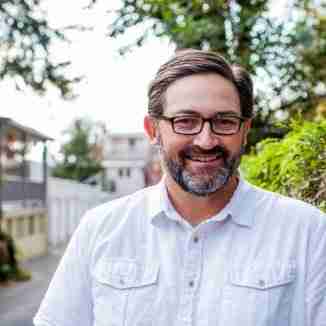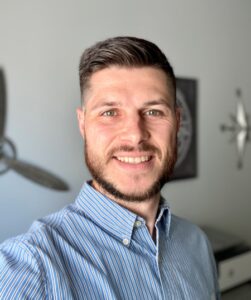
In Conversation: Bruce K. Redding Jr., CEO of Transdermal Specialties Global
Founded by former NASA mission specialist Bruce K. Redding Jr., Transdermal Specialties Global (TSG) is attempting to revolutionize drug delivery. Redding, who holds over 60 patents, is the inventor of microencapsulation technology, which his company is leveraging to develop an insulin patch as a non-invasive, needleless method for diabetes treatment.
TSG recently demonstrated to the Food and Drug Administration (FDA) that its insulin patch, called the U-Strip™, was able to keep patients’ glucose levels in a safe range over multiple days. The U-Strip will now move into a six-subject trial conducted in the company’s Frederick, Maryland test clinic and, should all go well, move on to Phase III trials once the pandemic subsides in the U.S. The company plans to conduct Phase III trials in South Korea in the near future. TSG also has a patch for Parkinson’s disease that is currently in Phase I trials.
Should TSG’s U-Strip insulin patch be approved by the FDA, it could revolutionize diabetes treatment across the globe by eliminating needles and rendering insulin pumps obsolete, all while delivering superior, less expensive treatment and better quality of life to patients. Redding believes that TSG’s U-Strip insulin patch is just the tip of the iceberg when it comes to TSG’s technology platform’s potential, which could revolutionize drug delivery.
With TSG’s insulin patch nearing Phase III clinical trials, we thought it was a great time to catch up with Redding, who recently relocated TSG to Frederick, Maryland, from Philadelphia, bolstering Frederick’s growing reputation as a key life science sub-cluster in the BioHealth Capital Region’s (BHCR).
What is TSG’s origin story?
TSG’s story starts about 30 years ago, believe it or not. I was working with NASA to develop microencapsulated adhesive tiles for the bottom of the space shuttle. I left the space program and started working on microencapsulation, which I later licensed to DuPont, ConAgra, Nabisco, and a number of other companies. We made the microcapsules using ultrasound.
Every year at Transdermal we have a contest to figure out what else we can use our technology for. The winning team gets a week-long trip to the Bahamas. I came up with the idea of using our technology for drug delivery. Naturally, I didn’t win the trip to the Bahamas because I’m the founder. This was a crazy idea at the time, but we took it to Penn State University and tested it in animal models and that worked. Then we asked what drugs could we deliver?
The theory was that our ultrasound could open your skin pores. All drugs have a molecular size to them. Small molecule drugs are between 0 and 500 molecular weight and your body can absorb them. Between 500 and 1,000 molecular weight you need to do something special that usually involves ‘sandpapering’ the skin in some way. Anything over 1,000 molecular weight you couldn’t put through the skin. 98% of the drugs out there are too large to be transdermally admitted and there are only about 20 patches on the market today that all deliver small molecule drugs.
We realized our technology delivered an unusual effect. I developed a sawtooth wave-combination square wave ultrasound. When the sawtooth wave hits your skin it enlarges your pores, then the square wave inserts the drug through the open pores. We started making microcapsules, which were first used in products like Hamburger Helper and Fruit Roll Ups for flavoring.
Insulin is 6,000 molecular weight and with this ultrasound approach, we can treat people with diabetes transdermally. And there are about 175 other drugs we can possibly target as well. This is how TSG came to be and how the technology I invented has evolved over time into our U-Strip patch platform.
We understand the U-Strip insulin patch just achieved a very important milestone. Where does the insulin patch currently sit within the FDA approval process and what’s next?
The FDA changed its requirement for Phase III for our product. Originally the end target was A1C. Now, with the advent of continuous glucose meters, you can measure glucose levels every five minutes over a number of days. The FDA reduced the length of the Phase III study from 90 days to 14 days because of this. What we had to prove was that 70% of the time our patch kept a diabetic’s glucose range between 70-180 milligrams per deciliter for 14 days.
We conducted a rehearsal study with two participants over six days. Now, we are getting ready to conduct a six volunteer study over 14 days. In our rehearsal study, we beat the FDA standard of 70% of the time-in-range requirement. One patient was 98% and the other was 88% of time-in-range. If you’re a non-diabetic your glucose is between 75-110 and we kept our patients there 80% of the time.
We also looked at mealtime spikes. Diabetics take an injection about 20 minutes ahead of a meal, and many diabetics forget to do this. We found that you could press a button on our device while you’re having a meal and our device delivers 4 units of insulin in 15 minutes and this counteracts any glucose spike during a meal. We also found that the Somygi effect did not occur with our patch during the rehearsal trial. The Somgyi effect is a glucose spike that can impact your eyesight when glucose levels drop overnight. Insulin pumps and injections all have that Somygi effect at 3 or 4 in the morning, and our patch did not. Our patch avoided typical morning glucose spikes as well.
We created our own clinic in Frederick because we couldn’t find any bed space for the volunteers. We needed to create a bubble for our volunteers because of COVID-19. We set this up in December 2020, ran our two volunteer rehearsal, and now we are getting ready for the 14-day FDA trial, which we expect will more than meet the FDA’s standard.
After the 14-day trial, we will apply to enter our Phase III trial that is targeted to include 280 subjects in the U.S. across several clinics, including Johns Hopkins University. Once we conduct this 280 subject trial, and if we succeed, we can apply for FDA approval. In theory, we could get FDA approval next year. However, because of COVID-19 levels in the U.S., it is very difficult to recruit subjects.
We’ve pivoted to conduct our trials in South Korea where COVID levels are low and fewer subjects are required. The plan is to get the insulin patch approved in South Korea over five or six months and then bring this data back to the U.S. And hopefully, COVID levels will be much lower than what they are now and we can pursue a U.S. Phase III trial.
If approved by the FDA, how will TSG’s U-Strip insulin patch positively impact the lives of those suffering from all forms of diabetes?
We used to believe the most important advantage of our product was eliminating needles. In some cases, diabetics have to inject themselves up to five times a day. This is a compliance problem. But now we realize there are quite a few therapeutic benefits, including the potential elimination of eye issues and neuropathy. Our data looks very promising.
A lot of Type-2 diabetics become Type-1s over time because of the strain put on their pancreas because of oral medications. Our patch could remove this problem as well. Also, our U-Strip patch actually gives you insulin; it is not something that fools your body into releasing the insulin you do have. So it might actually prove to be better therapeutically than a needle or an insulin pump.
Our U-Strip patch system is going to make it easier for a diabetic patient to be compliant—all they need to enter their weight, glucose levels, and press a button. It is just really easy to use. In general, we feel our patch has fewer side effects and will be far less expensive for patients than anything that’s currently on the market.
From a cost perspective, our U-Strip insulin patch will provide a more economical option for diabetic patients. We break it down into daily use costs. If you use a needle, you’ll pay $4 to $6 a day; if you use a dial-up needle, the cost is about $16 a day; for an insulin pump, which costs about $7,500 to purchase, translates to about $30 a day.
Our patch daily cost is about $4.50 a day so we are very competitive price-wise.
What is the state of fundraising and scale up for the insulin patch?
Our budget is about $250K to get the product to Phase III. We are currently seeking funding. We previously received funding from MMG out of Baltimore, which helped us move to Frederick, Maryland.
One of our board members was from Akonni Biosystems in Frederick, and they provided us with some lab space. We were founded in Philadelphia, but when we needed a Class 100 clean room, Akonni helped us out. We then created our own clinic in Frederick so we now have two facilities in Frederick.
Production of the patch is done in the U.S. and we have the capability today to produce 1M patches per month. This is not just a research exercise or lab product. We are in the pilot stage right now.
We’re actively reaching out to raise the 250K. Then we will be off to South Korea where we have two shareholders that could help fund the rest of the trials there. There are 9M diabetics in South Korea; the facility that we’ve chosen, Severance Hospital, is also part of the Beijing Diabetes Hospital that has 1.4M diabetics in one clinic. So if we get South Korean approval, we are on the market and saving lives right away.
We are thinking about going public in the future and perhaps expanding our manufacturing capabilities in Frederick, but we need to get these clinical trials done first.
What is the market for transdermal drug delivery and how might it transform drug development and product commercialization in the future?
We’re actively reaching out to Big Pharma companies to see what drugs they might want to test with our technology. For Big Pharma, transdermal delivery systems that bypass the gastrointestinal tract via a patch could reduce the approval process to four to five years, as opposed to 10-12 years and billions of dollars spent. On the aft end, when it comes to patent expirations and generic competition, you could possibly get a 20 year patent extension by switching delivery to a transdermal patch. We’re getting ready now to partner with Big Pharma to explore some of these ideas.
We have 175 other drugs on our target list, some of which make sense and some don’t. Our patch has the most potential for chronic conditions like diabetes, Parkinson’s disease, or MS, and even severe migraines. We are currently conducting a 10 subject Phase I trial for Parkinson’s; our patch for Parkinson’s could potentially knock down tremors that are oncoming and then prevent them from coming back.
In the U.S. alone there are 27M Type-2 diabetics and about 4M Type-1 diabetics. We can make 1M patches per month but that won’t even serve 1% of the diabetic population in the U.S. We plan to sell our insulin patches to Superclinics within Harvard University’s health system that has 300,000 patients, Yale’s clinic with 45,000 patients, the University of Pennsylvania’s clinic with 40,000 patients, and Johns Hopkins’ clinic with about 25,000 diabetic patients. We will aim to convert their needle patients to our patch.
Diabetes in the U.S. is a huge market in and of itself. We are a small company right now—we have about 13 staff members but expect to ramp up hiring once our insulin patch is approved. We are a privately-owned and funded company with no bank debt and no grants. Up until now, we’ve done everything internally and through royalties.
We need to get our insulin patch done first. And if we can get our insulin patch approved, we’ll be letting the world know that there is a new platform and new tool in the tool box for treating disease.
What is your longer term vision for TSG and the U-Strip technology?
I get asked that a lot, ‘What do you want to be when you grow up?’
We’re proving ourselves with our initial trials. Traditionally, we’ve secured strategic alliances with big companies and lived off the royalties. Right now there are just too many possible applications for one small biotech. We’re going to either have to develop joint ventures with the Big Boys and let them run with it. Or we could go public at some point in the future.
We’ve been a patent factory for the first few years; we just secured patent number 62, but now it’s time to get our products out into the market. Right now we are building value by getting through this FDA review. You have to understand that no one has ever done transdermal insulin with the FDA before so we are cutting new ground. We know we’re going to have partners and affiliates moving forward.
Our technology is new and unique—we’re the only company that can deliver drugs over 1,000 in molecular weight through the skin. Our goal is to open up the transdermal market from 20 drugs to approximately 200 at some point in the future.
- About the Author
- Latest Posts
Steve brings nearly twenty years of experience in marketing and content creation to the WorkForce Genetics team. He loves writing engaging content and working with partners, companies, and individuals to share their unique stories and showcase their work. Steve holds a BA in English from Providence College and an MA in American Literature from Montclair State University. He lives in Frederick, Maryland with his wife, two sons, and the family dog.





